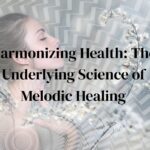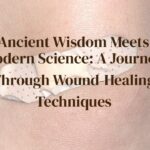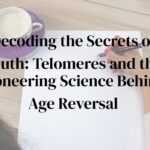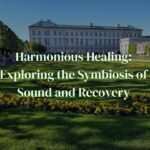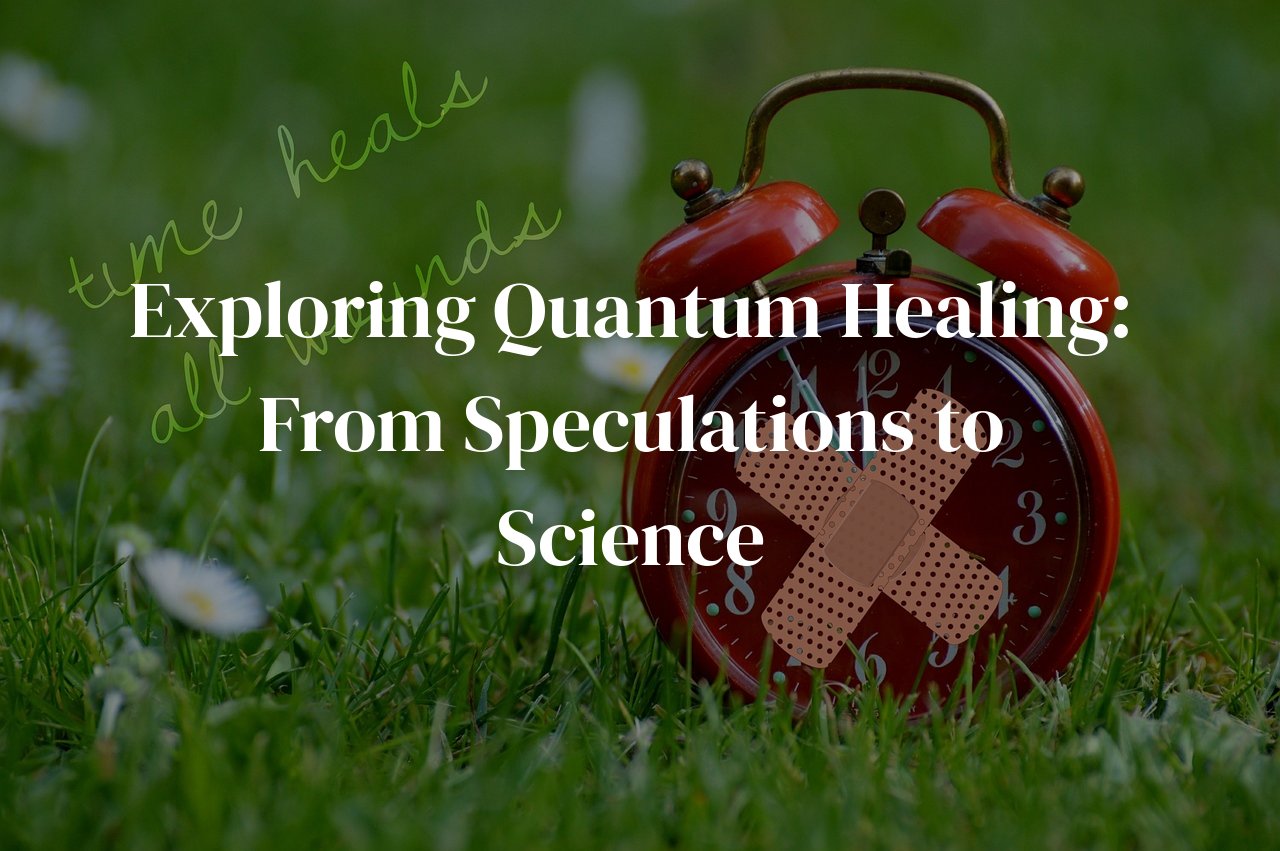
Dive into the world of quantum healing with us as we explore a fascinating intersection of ancient wisdom and modern science. This post aims to unravel the mysteries surrounding quantum healing, a concept often shrouded in both intrigue and skepticism. Here, we’ll break down what quantum healing entails, scrutinize its scientific legitimacy, and illuminate its potential real-world applications.
By reading this, you will gain valuable insights into how quantum healing claims to work, the controversies it stirs in the medical community, and the tangible evidence (if any) supporting these claims. Whether you’re a curious skeptic or a hopeful believer, this comprehensive guide will enrich your understanding and help you make informed decisions about incorporating such practices into your wellness journey.
Table of Contents
The Origins of Quantum Healing: A Brief History
Quantum healing, a term that melds quantum physics with holistic health practices, first gained widespread attention through the work of Dr. Deepak Chopra in the 1980s. Chopra, a trained endocrinologist, proposed that quantum physics principles could be applied to understand and influence human health, merging ancient Ayurvedic traditions with modern scientific insights. This combination led to what he coined as ‘quantum healing’, a new way of perceiving the intricate balance of body, mind, and spirit.
The origins of quantum healing can be traced back even further to the early 20th century, when quantum mechanics first revolutionized our understanding of reality. Pioneers like Max Planck and Albert Einstein introduced concepts that challenged classical Newtonian physics, opening the door to a new realm where particles could exist in multiple states and locations simultaneously. Later thinkers, intrigued by the mysterious behavior of quantum particles, began to wonder if these principles could be applied to biological systems.
In the 1970s, Dr. Fritjof Capra’s ‘The Tao of Physics’ became a seminal work linking modern physics with Eastern spirituality. Capra’s writings suggested that the interconnectedness observed in quantum mechanics resonated with the holistic worldview of traditional Eastern practices, from Taoism to Buddhism. These ideas laid a philosophical foundation for future explorations into the potential applications of quantum theory in health and healing.
Dr. Chopra’s approach was groundbreaking, as he began to explore how changes at the quantum level could influence our wellbeing. He proposed that thoughts, intentions, and consciousness could have a direct impact on the physical body, a notion that resonated deeply with those seeking alternative and complementary healing modalities. His book ‘Quantum Healing: Exploring the Frontiers of Mind/Body Medicine’ became a bestseller, catapulting the concept into mainstream consciousness and sparking both interest and skepticism in medical and scientific communities.
It’s important to recognize that quantum healing also shares a historical lineage with other mind-body practices that emphasize self-healing and energy flows. Practices such as Reiki, acupuncture, and even meditation have roots that stretch back thousands of years, each suggesting in their unique ways that the body’s energy can be harnessed for healing and balance.
Despite the enthusiasm, quantum healing has faced considerable criticism and skepticism from the scientific community. Critics argue that the principles of quantum mechanics are often misinterpreted or oversimplified when applied to complex biological systems. Nonetheless, the idea of quantum healing continues to capture the imagination of many, revealing a persistent yearning in modern society to bridge the gap between science and spirituality.
The historical evolution of quantum healing, from its philosophical origins to its popularization in contemporary wellness culture, illustrates a fascinating intersection of science and spirituality. As we delve deeper into this topic, we will explore the theoretical claims, scientific scrutiny, and real-life experiences that shape the ongoing debate over quantum healing’s legitimacy and efficacy.
How Quantum Healing Claims to Work: Mechanisms and Theories
Quantum healing is a term that often generates curiosity and skepticism in equal measure. The mechanisms and theories behind it are diverse and sometimes blurred by the mystique surrounding the term ‘quantum’. Yet, understanding these claims helps in separating valid possibilities from mere speculation.
At the heart of quantum healing is the notion that quantum phenomena can influence biological systems in ways that traditional science struggles to explain. Practitioners typically assert that our bodies are not just biochemical entities but also possess an underlying quantum structure. This structure can supposedly be influenced by conscious intent and energy fields.
Quantum Entanglement is one of the most intriguing theories associated with quantum healing. According to quantum physics, entangled particles remain interconnected, so the state of one particle can instantly influence the state of another, no matter how far apart they are. In the context of healing, it is claimed that healers can ‘entangle’ with patients, thereby transferring healing energy remotely.
Another major concept is Quantum Tunneling. In quantum physics, particles can transition through seemingly impenetrable barriers. Proponents of quantum healing suggest that similarly, healing energy can penetrate the body’s barriers, reaching and rectifying imbalances within cells and tissues.
The idea of Quantum Fluctuations also plays a role. These are minute, random changes in energy levels that occur even in a vacuum. Some theories posit that these fluctuations can be harnessed to create healing energies, which influence bodily functions at the quantum level, promoting repair and regeneration.
Nonlocality is yet another fascinating concept often mentioned. This is the idea that objects can influence each other’s states instantaneously across any distance. Quantum healing, proponents argue, works on this principle, allowing immediate healing effects regardless of physical proximity.
Finally, there’s the Zero Point Field theory, which proposes that all space is filled with a vast, indestructible energy. Quantum healers may claim to tap into this field to draw upon unlimited healing energies, directing them towards the patient to accelerate healing.
While these theories are intriguing, integrating them into practical, reproducible healing methods remains a topic of intense debate and ongoing investigation. As someone who has personally delved into the intricacies of quantum healing, I found that the most compelling aspect is not just the theories themselves but the testimonials that seemingly validate them. This juxtaposition of theory and personal experience creates a fertile ground for advancing our understanding, albeit with a healthy degree of skepticism.
Scientific Scrutiny: What Research Says About Quantum Healing
Quantum healing is a term that has generated significant debate within the scientific community. While proponents argue that it taps into quantum mechanics to facilitate physical and psychological healing, researchers remain skeptical and call for rigorous scientific validation.
Firstly, the core principles of quantum mechanics, including wave-particle duality and entanglement, are primarily observable at the subatomic level. Critics argue that translating these principles to macroscopic biological systems lacks empirical support. They often stress that quantum effects diminish at larger scales, meaning their direct application to human health is highly improbable.
Numerous studies have aimed to examine the efficacy of quantum healing. Articles published in prestigious scientific journals often highlight the placebo effect, suggesting that any perceived benefits might be due to an individual’s belief in the treatment rather than the treatment itself. This echoes broader concerns about distinguishing legitimate healing from psychological phenomena.
On the other hand, some exploratory research indicates there might be subtle, yet unexplained, effects. For instance, certain pilot studies have shown modest improvements in patient-reported outcomes. However, these studies frequently suffer from small sample sizes, lack of control groups, and insufficient blinding, thereby limiting the validity of the conclusions drawn.
Moreover, the lack of clear mechanisms makes the scientific community uneasy. Unlike conventional medicine, where biochemical pathways and physical interactions are well understood and documented, quantum healing lacks a coherent theoretical framework grounding its claims in measurable, reproducible phenomena.
Notably, respected institutions such as the National Institutes of Health (NIH) have funded research into complementary and alternative medicines, including quantum healing, although often with mixed results. Reports generated from such research outline a need for more robust, large-scale clinical trials to conclusively determine efficacy.
In my personal experience as a healthcare blogger, I have encountered numerous practitioners and patients who firmly believe in the power of quantum healing. Their stories often highlight significant personal transformations and unexpected recoveries. While these narratives are compelling, they serve to highlight the necessity of scientific rigor rather than substitute for it.
Overall, the scientific scrutiny of quantum healing remains cautious and critical. While anecdotal evidence and pilot studies might suggest some potential benefits, they fall short of providing the empirical rigor demanded by the scientific community. Until comprehensive, peer-reviewed research offers definitive proof, quantum healing will continue to reside in the realm of speculation and emerging exploration.
Real-life Experiences and Testimonials: Separating Personal Anecdotes from Universal Truths
When it comes to alternative healing modalities like quantum healing, the most persuasive testimonies often come from those who claim to have experienced its benefits firsthand. These real-life experiences are compelling, emotionally charged, and can offer intriguing insights into the potential of quantum healing. However, it’s important to distinguish between anecdotal evidence and universally applicable truths.
Take, for example, Sarah, who claimed that quantum healing cured her chronic back pain. Sarah’s story is heartfelt; she describes years of suffering, numerous unsuccessful medical treatments, and finally finding relief through quantum healing sessions. The emotional weight of her experience is undeniable, yet it is precisely this emotional charge that can cloud objective judgment. While Sarah’s relief is real to her, it does not automatically confirm the efficacy of quantum healing for others suffering from similar conditions.
In another instance, James, a cancer survivor, attributes his remission to a combination of quantum healing and conventional medical treatments. James’ holistic approach resonates with many readers because it suggests that quantum healing doesn’t have to exist in opposition to traditional medicine; instead, it can complement it. Yet, it’s crucial to understand that attributing success to quantum healing without thorough scientific validation can be problematic. Factors such as medical treatment, psychological effects, and individual variations play significant roles and need to be accounted for.
Similarly, the story of a mother who turned to quantum healing to help her child with ADHD creates a strong emotional connection. Her account is filled with hope, love, and the relief she felt as her child’s symptoms improved over time. While these testimonials serve to inspire and offer hope, establishing them as universal truths requires more robust, empirical evidence.
In critically assessing these testimonials, one must consider the placebo effect, which can be incredibly powerful. The mere belief in a treatment’s efficacy can produce real, measurable improvements in some cases. This phenomenon complicates the interpretation of personal anecdotes, making it difficult to differentiate between a treatment’s true effectiveness and the psychological impact of believing in its healing power.
What about testimonials that describe a lack of benefit? These are equally important in the broader conversation. The stories of individuals who experienced no improvement, or even adverse effects, must be weighed alongside positive testimonials. For every Sarah or James, there may be others for whom quantum healing did not work. These contrasting experiences underscore the necessity of a well-rounded understanding rooted in comprehensive research rather than selective success stories.
In conclusion, personal anecdotes surrounding quantum healing are rich in detail and emotion, offering valuable perspectives that add depth to our understanding of this controversial practice. However, as we embrace these personal stories, it is crucial to approach them with a critical mind, recognizing the difference between individual experiences and universally applicable truths. Only by combining anecdotal evidence with rigorous scientific research can we begin to unravel the true potential and limitations of quantum healing.
Practical Uses and Controversies: Is Quantum Healing Worth Your Time?
When venturing into the realm of quantum healing, one finds a blend of both enthusiasm and skepticism. For some, it offers a sense of mysticism and hope, while others dismiss it as pseudoscience. But is quantum healing worth diving into? Let’s unpack this through practical uses and the controversies surrounding it.
Firstly, proponents argue that quantum healing can address issues that traditional medicine cannot. They highlight cases where individuals have experienced remarkable relief from chronic pain, stress, and even mental health challenges. These claims often revolve around the idea that our thoughts and emotions can directly influence our physical well-being, echoing principles found in mind-body medical practices.
For instance, one common practice within quantum healing is visualization. Practitioners encourage individuals to visualize the healing of their bodies at a molecular level. By doing so, they claim that positive thought patterns can manifest physical health benefits. Imagine being told that envisioning your cells regenerating can foster actual physical recovery – it’s a compelling concept, though one that awaits more empirical validation.
On the flip side, many scientists and medical professionals argue that these practices lack rigorous backing. The main critique is that quantum healing often involves anecdotal evidence rather than statistically significant results obtained through controlled studies. This skepticism is not unfounded, as the scientific method demands replicability and measurable outcomes to substantiate any health-related claims.
As a personal anecdote, I once encountered an individual who swore by quantum healing for managing their migraines. Driven by curiosity, I explored their methods, which involved a combination of meditation, affirmations, and visualization. While their approach seemed far removed from conventional treatments, they reported a notable decrease in migraine episodes. Was this a placebo effect, or did their mental conditioning truly play a role in altering their physical state?
The controversies extend further when considering the ethical implications of promoting quantum healing. Medical professionals often express concern that patients might forgo evidence-based treatments in favor of alternative therapies, potentially exacerbating their conditions. Such cases remind us of the critical responsibility held by health practitioners to provide balanced, well-informed advice.
So, is quantum healing worth your time? The answer appears to be subjective. For those seeking supplementary approaches to conventional medicine, it may offer psychological comfort and a sense of agency over one’s health. However, it is crucial to approach it with a discerning mind, recognizing that it should not replace scientifically backed treatments but rather complement them where appropriate.
In conclusion, while quantum healing holds intriguing potential and has its share of ardent supporters, it also faces substantial scrutiny within the scientific community. Balancing personal experiences with empirical evidence is key to making informed health decisions in this burgeoning field.
Conclusion
In conclusion, navigating the labyrinth of quantum healing from fact to fiction can be challenging. While the concept boasts alluring promises, the scientific community remains cautious. This post has taken you through its historical roots, theoretical mechanisms, scientific evaluations, real-life experiences, and ongoing controversies. Armed with this knowledge, you are now better equipped to discern the potential benefits and drawbacks of quantum healing in your own life.
As always, approach any alternative therapies with a balanced perspective and consult healthcare professionals when in doubt. Stay curious, stay informed, and always prioritize your well-being.
